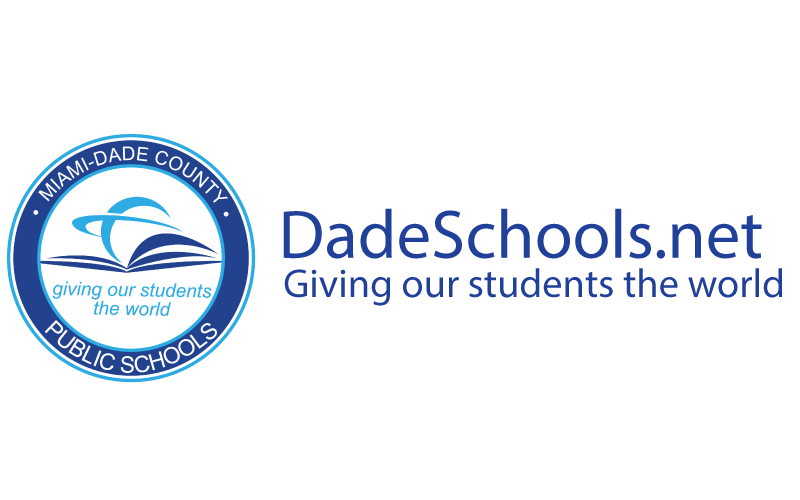
Miami-Dade County Public Schools states that “outside confirmation from medical or mental health professionals” is not required for students to change their chosen gender identity; mandates teachers to use the preferred pronouns of students
Incidents
- Issues
- Sex and Gender
Miami-Dade County Public Schools has a website dedicated to the school district’s “Office of Educational Equity, Access, and Diversity.” The school district states on the website that “inherent in M-DCPS’ commitment to giving our students the world, and in fulfilling our singular guiding goal of improving student achievement, are the constructs of diversity, equity, and inclusion.” The school district then explains its goals while specifically mentioning “gender identity”:
- Through our commitment to Diversity, we will ensure that we embrace, honor, work to understand, and celebrate all of our M-DCPS community members’ various identities and differences.
- Through our commitment to Equity, we will ensure just and fair treatment for all and equitable access to opportunities and resources available through M-DCPS.
- Through our commitment to Inclusion, we will ensure the active engagement and contribution of all people across M-DCPS functions. M-DCPS does not and shall not discriminate on the basis of race, ethnicity, culture, age, gender, family/parental status, sexual orientation, gender identity or expression, disability, national origin, socioeconomic status, marital status or religion/belief structure.
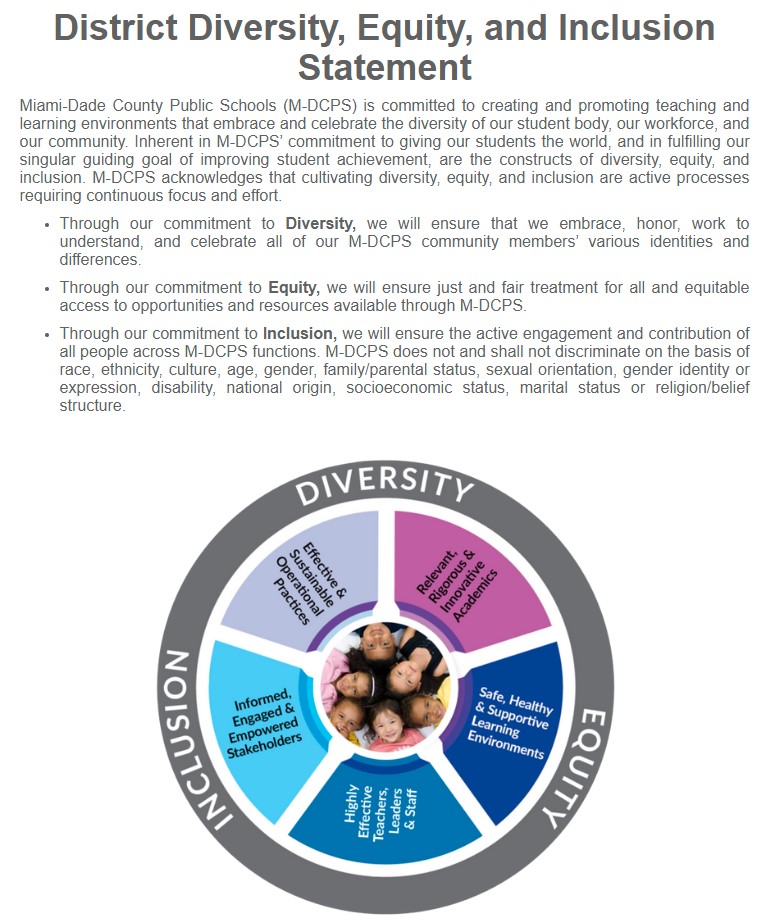
The equity website has a message on the homepage with the title “Beyond Equity.” The message states that “language is learning” and promotes the idea of using the preferred pronouns of students. The message states: “Utilizing someone’s correct pronoun is a way to affirm another individual’s identity and it also lets them know that you accept who they are. Join us to recognize the many Pronouns our community identifies with.”
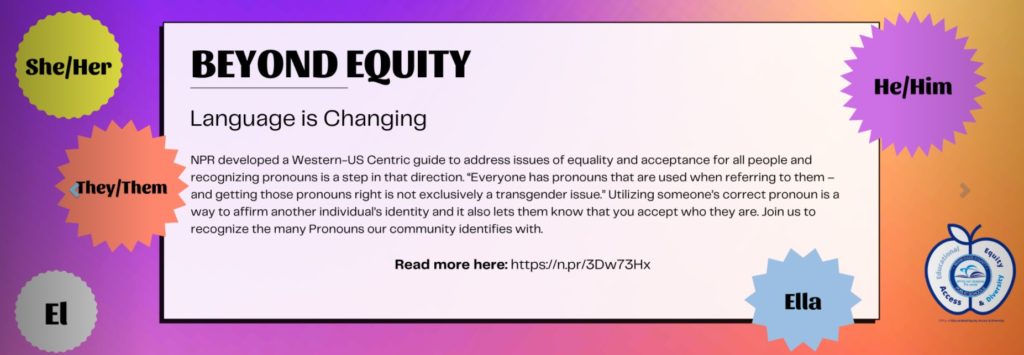
The school district’s equity website has a page for “Student Resources.” One resource links to the “No Place for Hate” project that is operated by the notoriously political organization Anti-Defamation League (ADL). In a document for the “No Place for Hate” project, the ADL states that “although learning how to demonstrate kindness is an important part of a child’s psychological and social development, ADL highly encourages schools to move beyond kindness to social justice.” One section of the document is titled “Let’s Get It Right: Using Correct Pronouns and Names.” In this section, the document encourages teachers to use the preferred pronouns of students:
From an early age, many were taught that pronouns should follow specific rules along the gender binary: ‘she, her and hers’ for girls and women and ‘he, him and his’ for boys and men. However, as our society has progressed in understanding gender identity, our language must also be updated. It should be accurate and convey understanding and respect for all people, especially for those who are transgender, gender non-conforming and non-binary.
The document then encourages teachers to implement “LGBTQ” topics into classroom discussions:
Using the lesson below, lead a discussion about the ways in which LGBTQ people, events and issues have been less visible or made invisible in mainstream accounts of history. Explore the impact of invisibility on people and how different groups have been historically marginalized in society. Then, engage students in a discussion about people who may feel invisible in their school. Be sure to focus on general identity characteristics (e.g., sexual orientation, immigration status, gender identity, etc.) rather than specific individuals. Based on this discussion, ask students to sign up to be interviewed if they feel like an aspect of their identity needs more visibility.
The “No Place for Hate” document also features a “Pyramid of Hate.” The ADL uses the document to explain that “while every biased attitude or act does not lead to genocide, each genocide has been built on the acceptance of attitudes and actions described at the lower levels of the Pyramid.” The pyramid intends to show that actions such as using “non-inclusive language” and committing “microaggressions” will possibly lead to “the act or intent to deliberately and systematically annihilate an entire people.”
The school district also supports a “SAFE Network” that is intended “to provide school and District employees with the knowledge necessary to build comprehensive and inclusive programs that support all students, including students who are lesbian, gay, bisexual, transgender, or questioning (LGBTQ).” The district continues to explain that “all of our schools have a designated liaison who receives specialized professional development focused on building expertise in program development and delivery of these comprehensive services.”

The school district’s website also has a page labeled “Employee Resources.” Resources for teachers are labeled “Teaching About Racism, Violence, Inequality, and the Criminal Justice System,” “Using Photographs to Teach Social Justice,” “15 Classroom Resources for Discussing Racism, Policing, and Protest,” “PBS – Teachers’ Guide to LGBT Youth Resources,” and “Educator Resources from GLSEN.”
GLSEN is known for promoting LGBTQ issues to young children. GLSEN states on its website that “while many LGBTQ+-inclusive school supports begin in middle or high school, it is critical for elementary schools to establish a foundation of respect and understanding for all people.” The organization has also appeared to show support for children taking “hormone replacement therapy” to transition to another gender:
Upon birth, we are typically categorized into one of two genders (boy or girl) depending on how our genitals are read. Throughout our lives, however, our many bodily characteristics work together to create a unique path of development, causing some of us to grow really tall, and others to remain short, or some of us to grow hair under our armpits and legs, while others remain bare. While this development often happens on its own during puberty, this change can also be administered through medicine, such as hormone replacement therapy. Since our society often conflates our bodies (or genitalia) with our gender identity, it is critical that we allow space for people to self-identify.
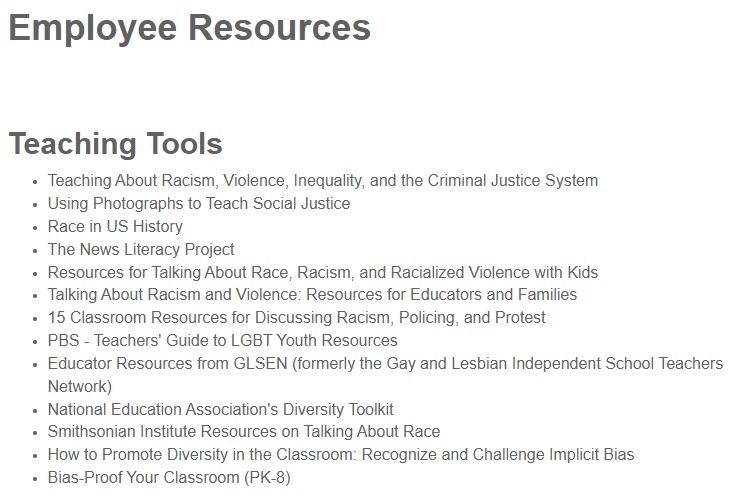
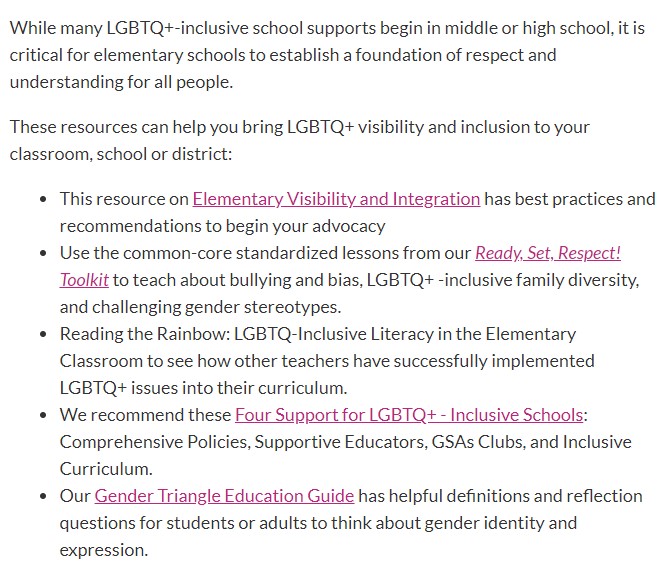

Additional resources for teachers include links to the organizations “Teaching Tolerance” and “Courageous Conversations.” Teaching Tolerance is now known as Learning for Justice. The organization is known for offering resources to help educators teach their students about “social justice” and equity. One resource that Learning for Justice specifically offers is called the “Social Justice Standards.” The document for these standards includes goals to achieve for students. One goal is that “students will develop language and historical and cultural knowledge that affirm and accurately describe their membership in multiple identity groups.” Another goal appears to outright state that the purpose of the “Social Justice Standards” is to turn students into political activists: “Students will make principled decisions about when and how to take a stand against bias and injustice in their everyday lives and will do so despite negative peer or group pressure.”
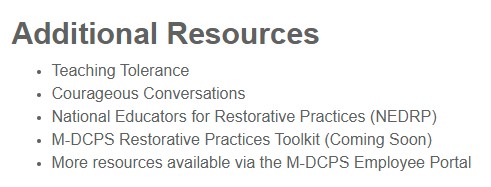

The organization Courageous Conversations states that it provides “training, coaching and consulting services for millions of racial equity leaders around the world.” Courageous Conversations offers training “to help individuals and organizations address persistent racial disparities intentionally, explicitly, and comprehensively.” The organization also provides consulting to help clients “navigate any predictable and emerging resistance” while also “redesigning practices and policies to create a more racially equitable, diverse and inclusive space for your company or organization.”
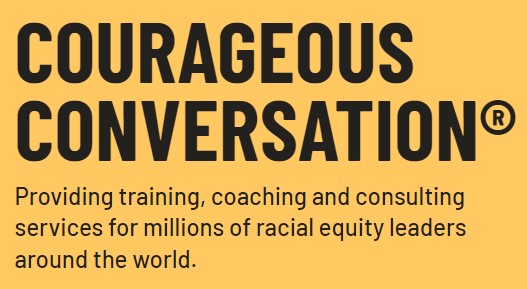
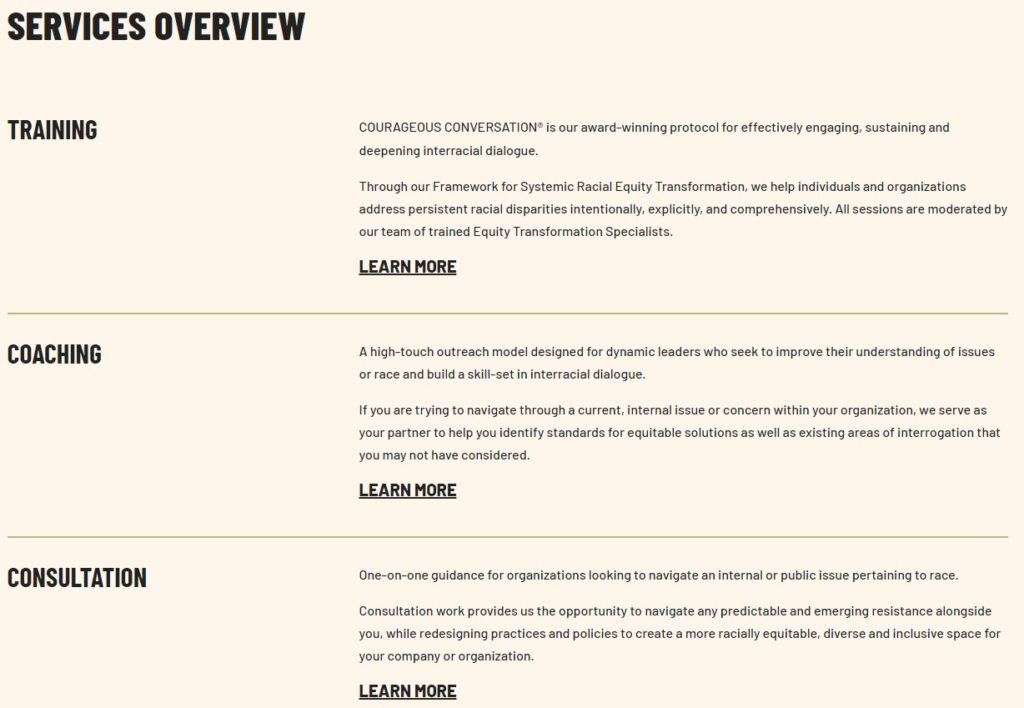
The school district’s website additionally has a page called “Parent Resources.” Resources for parents are labeled “Talking Race With Young Children” and “A Guide for Understanding, Supporting, and Affirming LGBTQI Children, Youth, and Families.” The LGBT resource links to a document that states people “don’t choose” their “gender identity.” The document also states for people to “respect and acknowledge the identity of young people who are LGBTQI2-S by using acceptable and inclusive language in documents and discussions.” The document advises people to ask the “preferred gender pronoun” when speaking to others. The document also advises people to “display rainbow flags and other messages and images, such as the GLSEN safe space sign, that signify a place of safety, acceptance, and support.”

The school district has a 2021-2026 strategic plan on its main website that has five pillars with priorities to accomplish. The third pillar is titled “Highly Effective Teachers, Leaders, and Staff.” An objective of this pillar is to “develop a culturally responsive and high-performing workplace.” A reoccurring theme in the strategic plan is to implement “culturally responsive” ideas and teaching practices into the school district. The term “culturally responsive” is often used to describe a method of teaching that includes the race and ethnicity of students as part of the lessons taught in classrooms. The strategic plan lists three goals for this objective:
- Increase participation in professional learning activities that promote a culture of collaboration and collective responsibility for student learning by 25%.
- Seventy-five percent of employees who participate in Diversity, Equity, and Inclusion (DEI) professional learning activities will perceive themselves as change agents and promote culturally responsive learning practices, equitable educational opportunities and fair and equal hiring and promotion practices.
- Seventy-five percent of support personnel who engage in professional training and development opportunities to acquire new skill sets will perceive themselves as more capable and better able to complete job responsibilities.
The school district has a website discussing how it is spending COVID-19 relief funds received from the federal government. The school district plans to spend at least $9 million of its COVID-19 relief funds to “develop a culturally responsive and high performing workforce.”
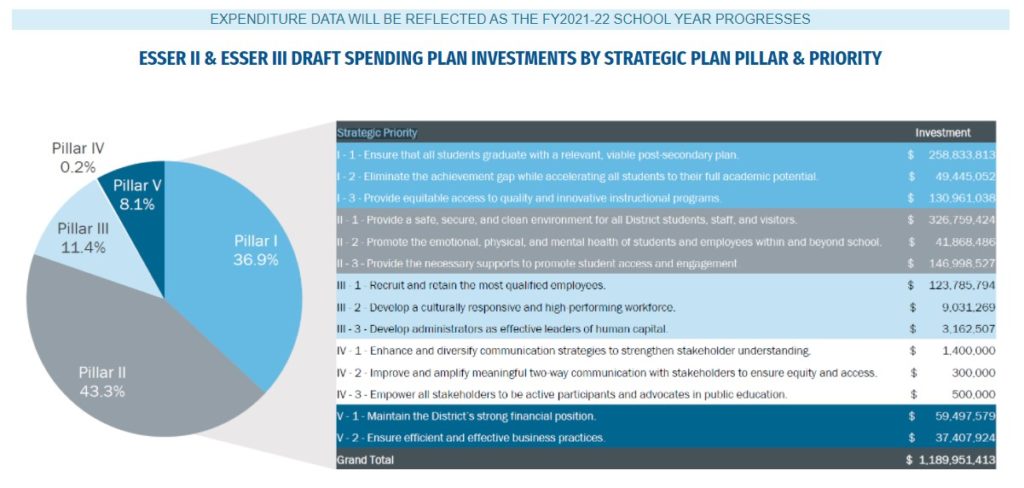
The school district also has a website dedicated to library resources. One resource is called “Children’s Book Collection.” Books available in this resource include I Am Jazz and Jack (Not Jackie). Both books feature young children transitioning to another gender. Another resource on the school district’s website is labeled “Teen Book Collection.” The linked page for this resource includes the books Stamped: Racism, Antiracism, and You and All American Boys. Political activist Jason Reynolds worked on both books. The description for the book All American Boys specifically mentions “white privilege” as a theme.
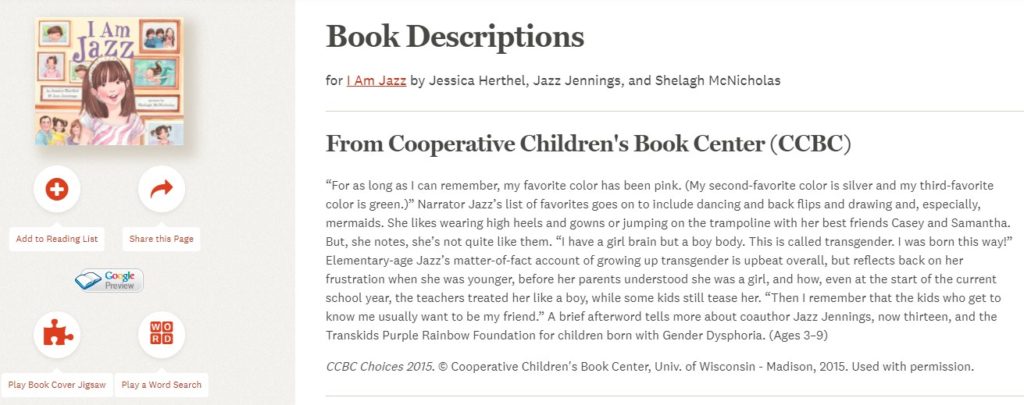
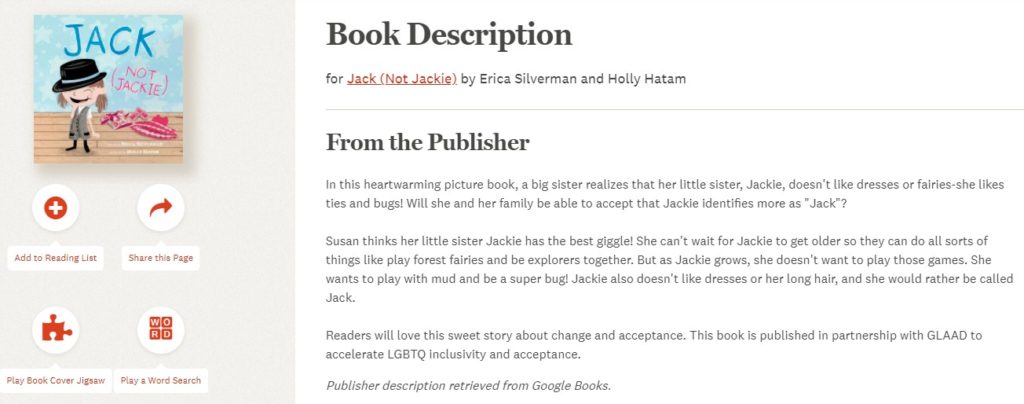
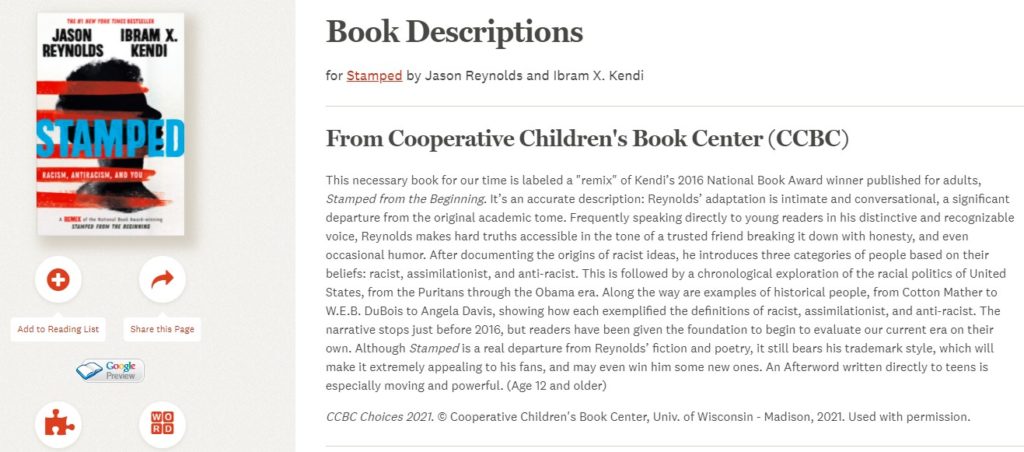
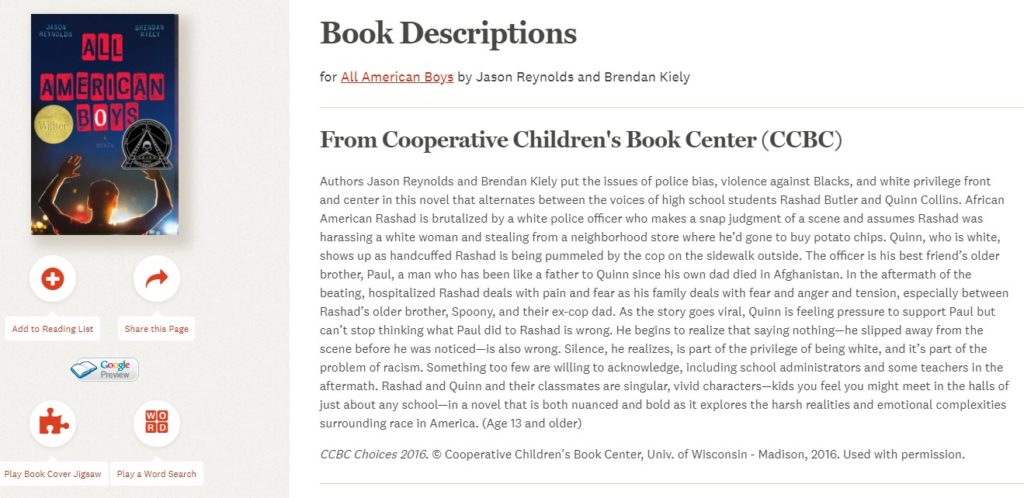
Another resource on the school district’s library website is labeled “Issues and Controversies.” The homepage of the resource features the topics of “Critical Race Theory” and “Transgender Athletes.” The resource also has a category called “Alt-Right” on the homepage. Topics of discussion in the “Alt-Right” category include “Critical Race Theory,” “The Trump Presidency,” and “Anti-Racism.”
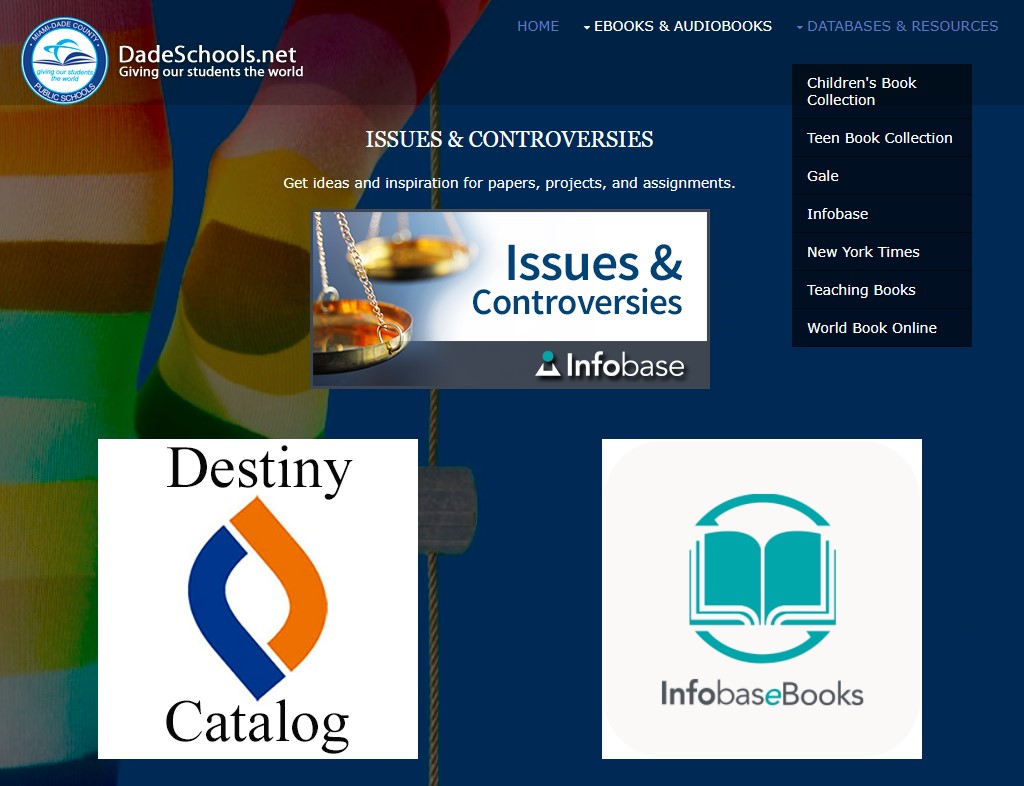
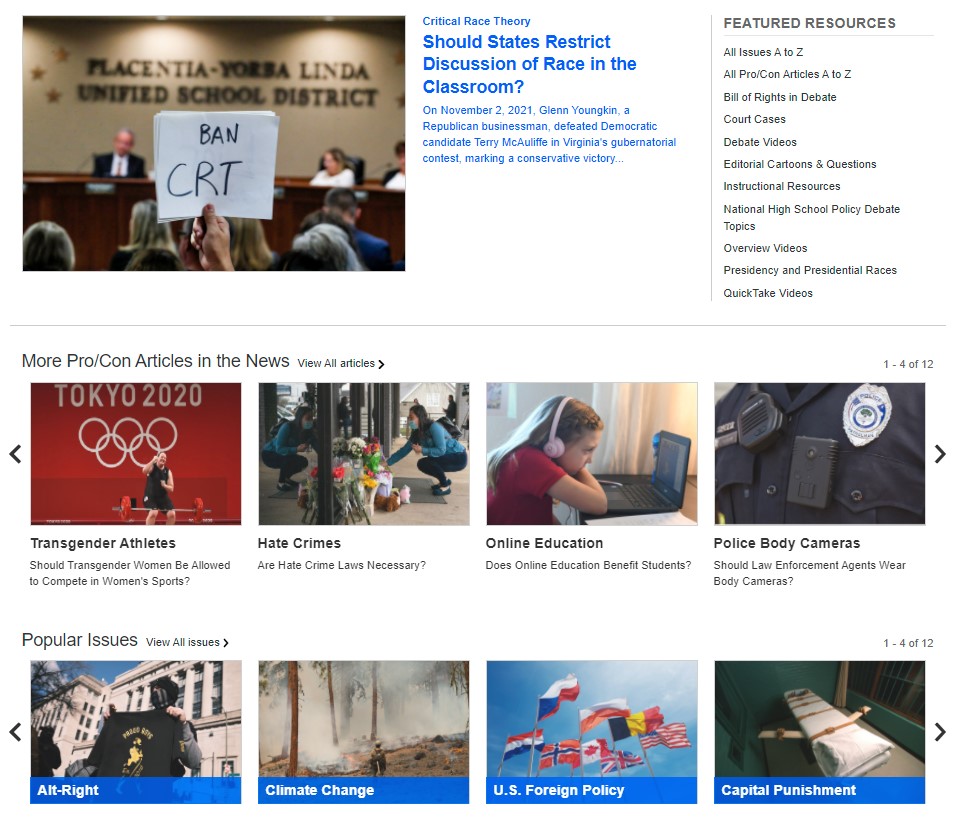

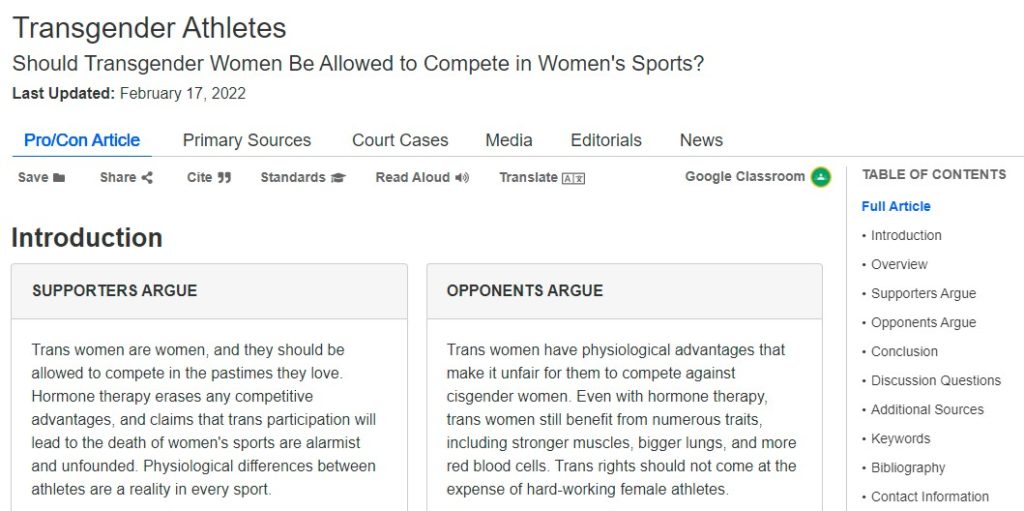
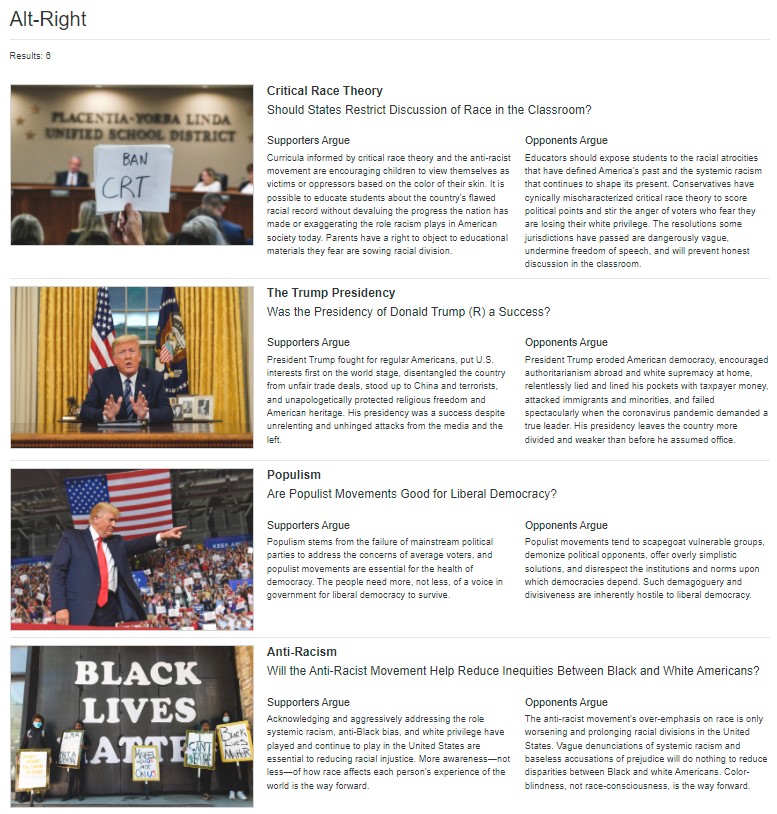
The school district has a GLSEN document called “State Inclusive Curricular Standards” on its main website. GLSEN uses the document to push school districts to change their curricula to include LGBTQ themes. The document brags that “in 2019, Maryland became the sixth state to approve the addition of LGBTQ inclusive curricular standards following Illinois, California, New Jersey, Colorado, and Oregon.” The document also explains that GLSEN provides an “inclusive curriculum guide” for educators that includes “queer and transgender” topics:
The inclusive curriculum guide provides educators with resources on how to incorporate LGBTQ history, themes, and leaders into lesson plans. For example, GLSEN has developed history cards that feature icons and events that have greatly influenced the LGBTQ+ community in contemporary history, which feature queer and transgender people of color who have been and continue to be integral to LGBTQ advocacy.
The school district also has a policy originally published in July 2020 titled “Guidelines for Promoting Safe and Inclusive Schools.” The document states that “this guide includes affirming the right of students to wear clothing, attend classes, choose restroom and locker rooms, and be addressed with names and pronouns that reflect the gender they identify with.” The document continues to state that it “is intended to support schools in fulfilling our shared obligation to promote the dignity, respect and equity of transgender and gender nonconforming students.” The document then lists “guiding principals” in dealing with transgender students:
- Every student has the right to learn in a safe and accepting school environment. Supporting transgender students gives them the equal opportunity that schools are legally obligated to provide to all students.
- All adults must act as protective agents committed to the safety and well-being of the youth they serve, including those who are transgender or gender non-conforming, and should recognize that working as a team is in the best interest of individual students seeking support.
- No student should ever be asked, encouraged or required to affirm a gender identity or to express their gender in a manner that is not consistent with their self-identification or expression.
- Ongoing learning is a key element of this process. Educators and administrators need to engage in regular professional development and training to build a school climate that avoids gender stereotyping and affirms the gender of all children.
The school district’s document also provides definitions for LGBTQ terms. The document describes “gender” as a “complex relationship between physical traits and one’s internal sense of self as male, female, or neither (gender identity) as well as one’s gender expression (outward presentation and behaviors).” The document describes “gender identity” as “a person’s deeply held internal sense or psychological knowledge of their own gender, regardless of the biological sex they were assigned at birth.”
The school district also states in the document that “only the student can determine their gender identity.” The school district further explains that medical professionals are not needed in a student’s transition process: “Outside confirmation from medical or mental health professionals, or documentation of legal changes, is not required.“
The school district then defends the idea of young children transitioning to another gender:
Many negative reactions are a result of a lack of knowledge or familiarity with the idea of transgender people, particularly transgender youth. While a public transition might make others (including you) feel uncomfortable, that discomfort does not outweigh the student’s need to be safe and supported.
The school district also mandates for teachers to use the preferred pronouns and names of students. The school district states in the document that “school staff should address students by their chosen name and pronouns that correspond to their gender identity, regardless of whether there has been a legal name change.” The school district also explains that some student records can be changed to fit a student’s gender identity. Students can also use the restrooms and locker rooms and participate in the sports that fit their chosen gender identity. The school district then mentions that “school libraries should include a selection of high-interest LGBTQ books and media.”
The school district has a document on its website promoting its “School Allies for Equity Network (SAFE)” in an effort to honor “diverse orientations and genders.” The document explains that the goal of SAFE is to “provide school and district employees with the knowledge necessary to build comprehensive and inclusive programs of support for all students and parents including students who are lesbian, gay, bisexual, transgender, or questioning (LGBTQ).” The document also explains that “School Social Workers, School Counselors, and TRUST Counselors have been trained on LGBTQ awareness and best practices.”
The school district also has a document on its website titled “Building Support for Schools that Openly Affirm the Diversity of Sexual Orientation and Gender Identity.” The document provides educators and activists with the knowledge they need to fight back against parents and community members who oppose their children being taught LGBTQ issues. The document states to avoid using the terms “children” and “kids” because “opponents to schools affirming of people who are lesbian, gay, bisexual, or transgender have intentionally used the word ‘children’ to exploit concerns that very young students may be exposed to sexual content.” The document states that the better term to use is “students.”
The document also states to avoid using the words “requires” and “mandates” because “parents want control over what’s taught to their students.” The document advises educators and activists to use the terms “ensures” and “guides” to avoid this controversy. The document further explains to avoid using the term “curriculum” and advises educators and activists to rather use the terms “lessons” and “materials.”
The document advises educators and activists to avoid the terms “bathrooms” and “locker rooms” because “opponents of school policies that affirm students who are transgender or gender non-confirming try to keep parents focused on bathrooms as a way to insert sexual predators into the conversation and promote fear and distrust.” The document states to rather use the term “school facilities” because this term keeps “the focus on the entire school climate by referring instead to school facilities.”
The document explains that LGBTQ activists can use social media to grow their reach and organize their supporters. The document explains how to use Facebook groups, online petitions, and Twitter. When creating a petition, the document explains to “create a strong headline and introduction that are emotionally compelling and concise” and to “use your core messaging and do not overload the reader with too many details or acronyms.”
The document has a guide explaining how LGBTQ activists can influence school board members to achieve their goals. Activists are advised to “tell your personal story” because “personal contact and stories help elected officials better connect to issues of diversity and inclusion.” The document also advises activists to “research board members and their motivations” to know how to influence them. When participating in public hearings, the document advises activists to ask “a diverse group of influential community members (including leaders of community groups, students, religious leaders, and PTA officers) to speak.” The document then outright states to “let the other side come off as angry, fearful, and negative.” A chart is also featured in the document explaining how activists can garner support to eventually bypass resistance from parents and church leaders.
When dealing with the media, the document outright states that reporters and producers are likely to agree with policies that LGBTQ activists are pushing and this can be used as an advantage: “Education reporters for major newspapers, local news reporters for smaller newspapers, and public affairs producers for radio stations are the reporters who will most likely be interested in efforts to create more welcoming and affirming school climates.” The document also provides instructions to help prepare students for interviews with the press.
Stay Informed
